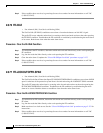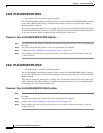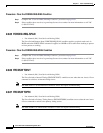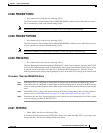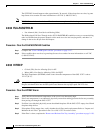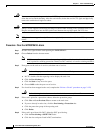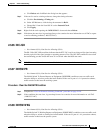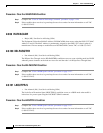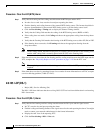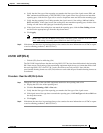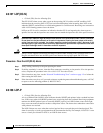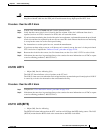
2-74
Cisco ONS 15327 Troubleshooting Guide, R3.4
March 2004
Chapter 2 Alarm Troubleshooting
Alarm Procedures
Caution Do not remove a card during a card reboot. If CTC begins to reboot a card before you remove the card,
allow the card to finish rebooting. After the card reboots, delete the card in CTC again and physically
remove the card before it begins to reboot.
Caution Always use the supplied electrostatic discharge wristband when working with a powered ONS 15327.
Plug the wristband cable into the ESD jack located between the top high-speed and XTC slots.
Note CTC gives the user approximately 15 seconds to physically remove the card before CTC begins a card
reboot.
Procedure: Clear the IMPROPRMVL Alarm
Step 1 In node view, right-click the card reporting the IMPROPRMVL.
Step 2 Choose Delete from the shortcut menu.
Note CTC does not allow you to delete the reporting card if the card is in service, has a circuit mapped
to it, is paired in a working protection scheme, has DCC enabled, or is used as a timing reference.
Step 3 If any ports on the card are in service, take them out of service:
Caution Before taking a port out of service, ensure that no live traffic is present.
a. In CTC, double-click the reporting card to display the card view.
b. Click the Provisioning tab.
c. Click the State of any in-service ports.
d. Choose OOS to take the ports out of service.
Step 4 If a circuit has been mapped to the card, complete the “Delete a Circuit” procedure on page 2-128.
Caution Before deleting the circuit, ensure that the circuit does not carry live traffic.
Step 5 If the card is paired in a protection scheme, delete the protection group:
a. Click View > Go to Previous View to return to the node view.
b. If you are already in node view, click the Provisioning > Protection tabs.
c. Click the protection group of the reporting card.
d. Click Delete.
Step 6 If the card is provisioned for DCC, delete the DCC provisioning:
a. Click the Provisioning > SONET DCC tabs.
b. Click the slots and ports listed in DCC terminations.



